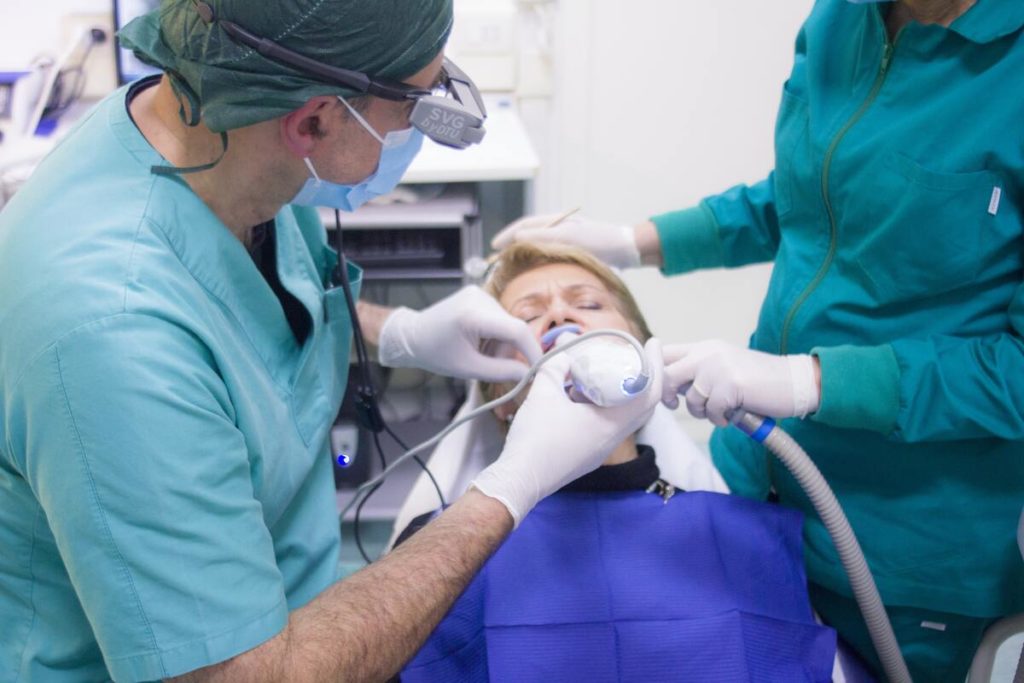Traditionally, dental anaesthesia has become known as laughing gas, but it is actually nitrous oxide. It was originally used because it was cheap, very safe and very quick acting. Nitrous oxide also works as a form of pain relief and distorts your perception of a given time. It is not a particularly good anaesthetic in terms of working memory, however many patients at the dentist Brentwood still felt very nervous while under the effect of gas and air nitrous oxide.
This has led to the adoption of new types of anaesthesia; the type of full anaesthesia which most people associate with medical procedures is the complete anaesthesia, which is performed in an operating theatre. This has its own inherent dangers and therefore requires trained professionals to monitor life signs and constantly alter drug dosages to strike a balance between maintaining an unconscious state, but not depressing the patient’s respiration.
There have been attempts to calm nervous patients using oral barbiturates. These are little more than valium taken before numbing agents are administered. The issue with oral sedation is its time to set in, often resulting in extending the length of an appointment and forcing patients to wait longer.

IV sedation
Some dental clinics have started to offer the option of IV sedation; the most common drug used is propofol. It is a very well tolerated form of anaesthesia, which has a very rapid onset, but only a few 10-15 minutes of duration. Luckily, there is no issue with redosing it and its most common side effect is slight discomfort at the injection site. Sensitivity and reactions are very rare and there is a wide therapeutic index making it safe to use in practice.
If you are interested in receiving IV sedation, you should ask your clinic early on as it is not always available. They will also require your full medical history and any prescription medication you may be taking in order to avoid any contraindications or drug interactions.
When any sedation is used, you do not lose consciousness although you are highly unlikely to remember anything that happened after the sedation was administered. During your sedated state, you’re highly suggestible and can respond to requests as well as communications; this allows your dentist to continue to receive important information about how the procedure is going without you having to experience the procedure. Most dental teams find this to be an extremely useful halfway house between local numbing and full sedation.
Patients treated with IV sedation do require an escort and cannot drive or operate heavy machinery for 24 hours after receiving sedation. If you are a nervous patient, it may be wise to have multiple dental procedures carried out on the same day, allowing you to maximise the use of IV sedation without having to receive regular sedation.
With IV sedation used over a million times in clinical practice in 2019, it seems the number of dental clinics who will offer IV is only going to increase over time as it becomes more and more standard in dentistry, with its use becoming as normal as lidocaine or nitrous oxide.
Nitrous oxide on the other hand has become rarer and with IV sedation having a faster onset, it seems that it will eventually be displaced from the clinic altogether.







